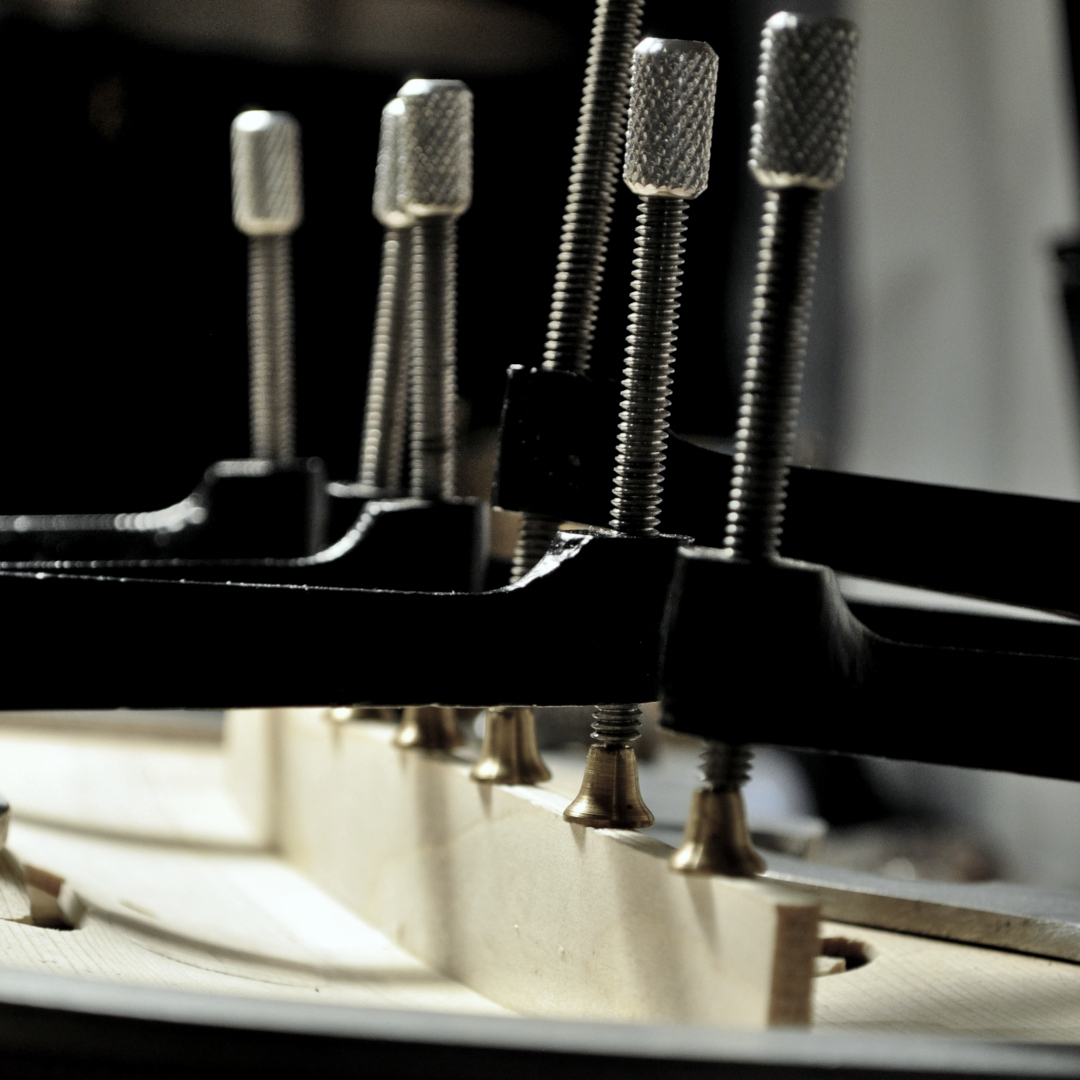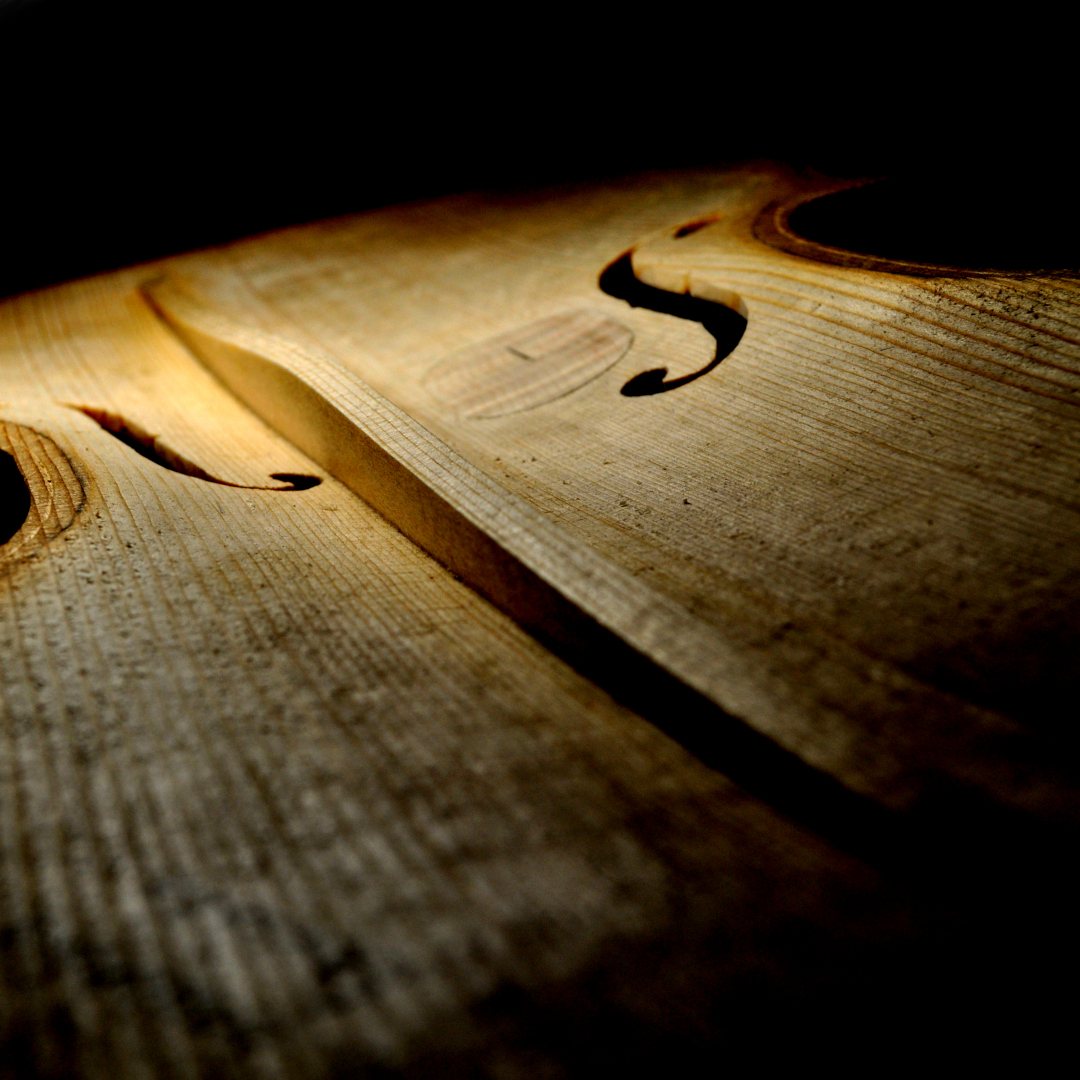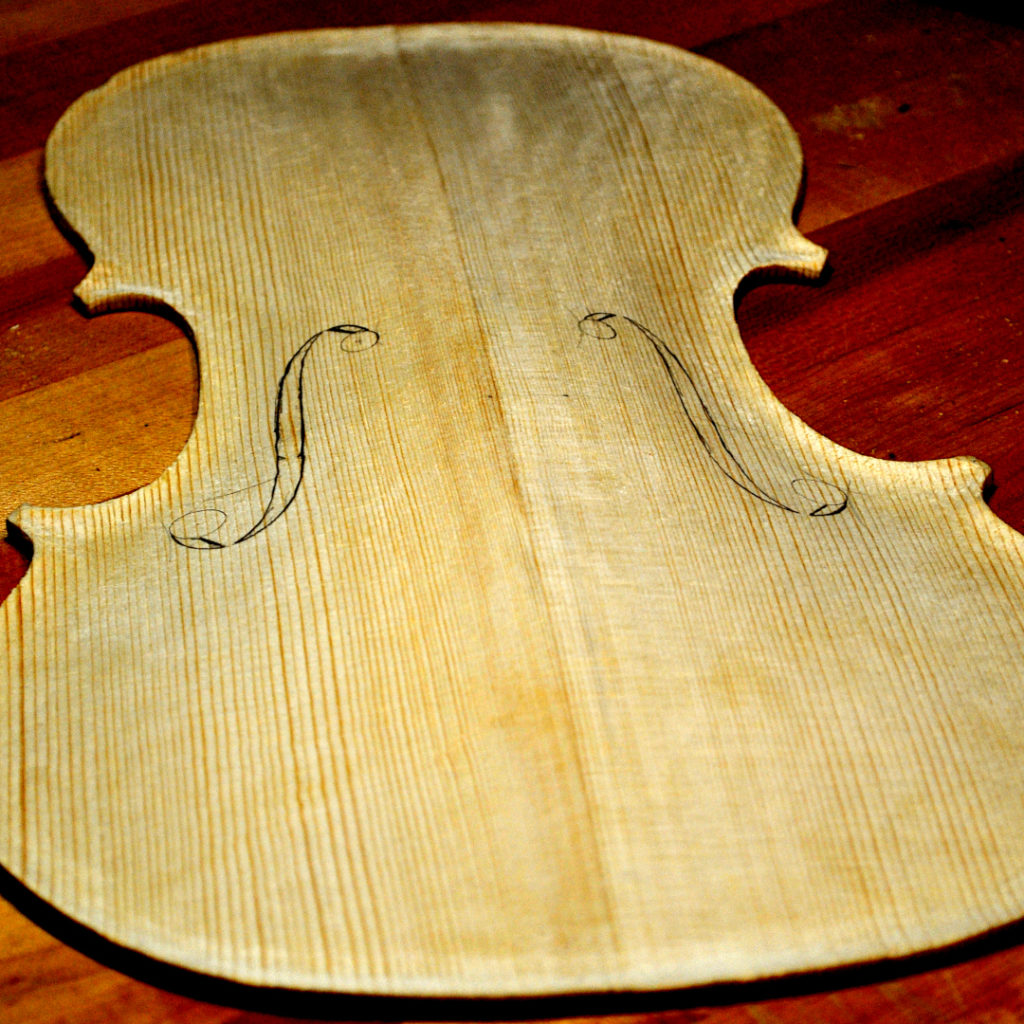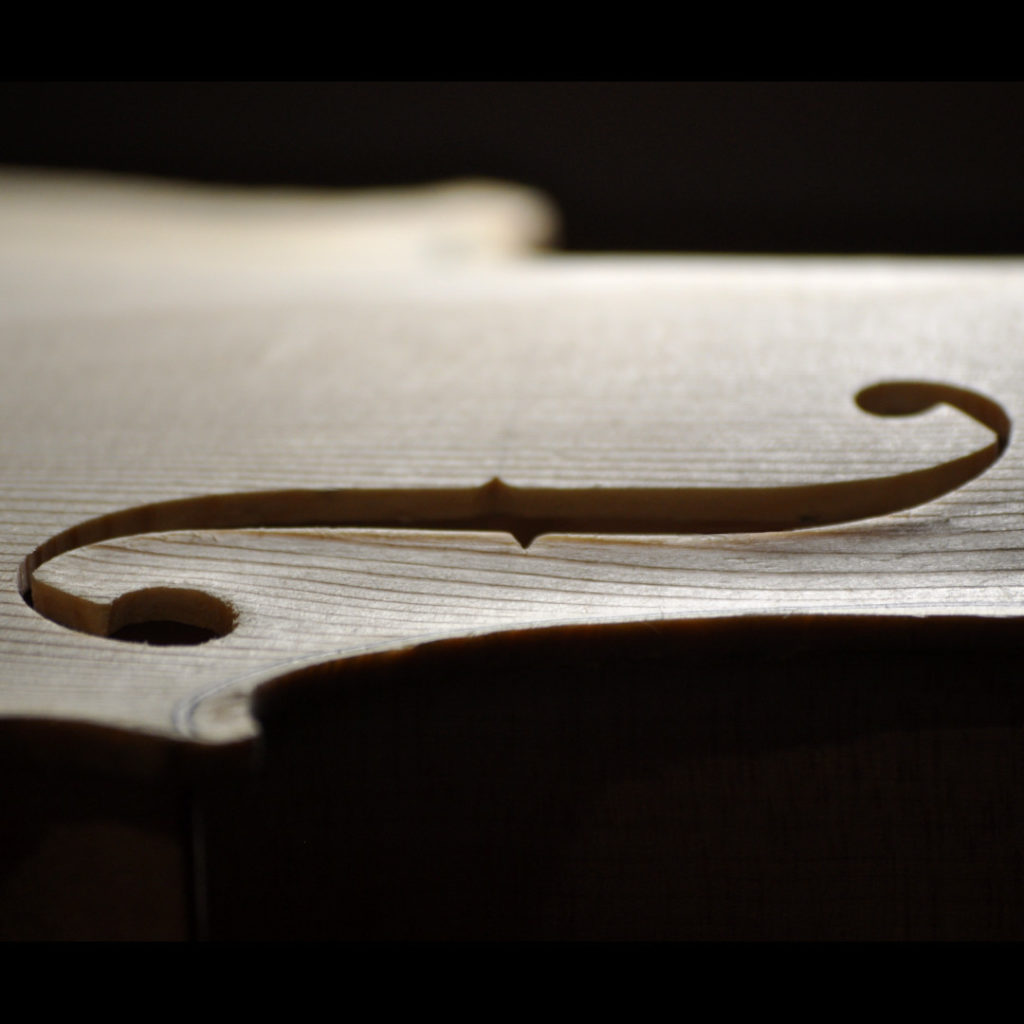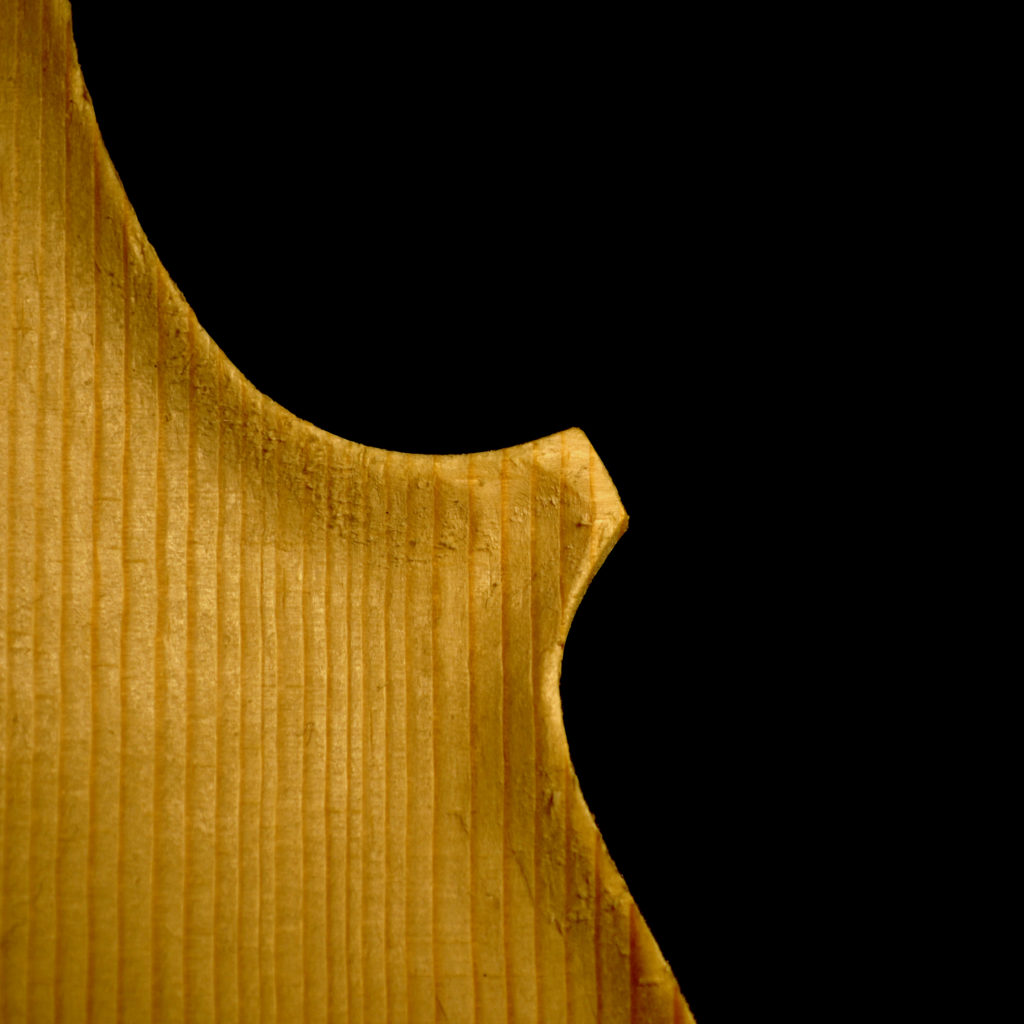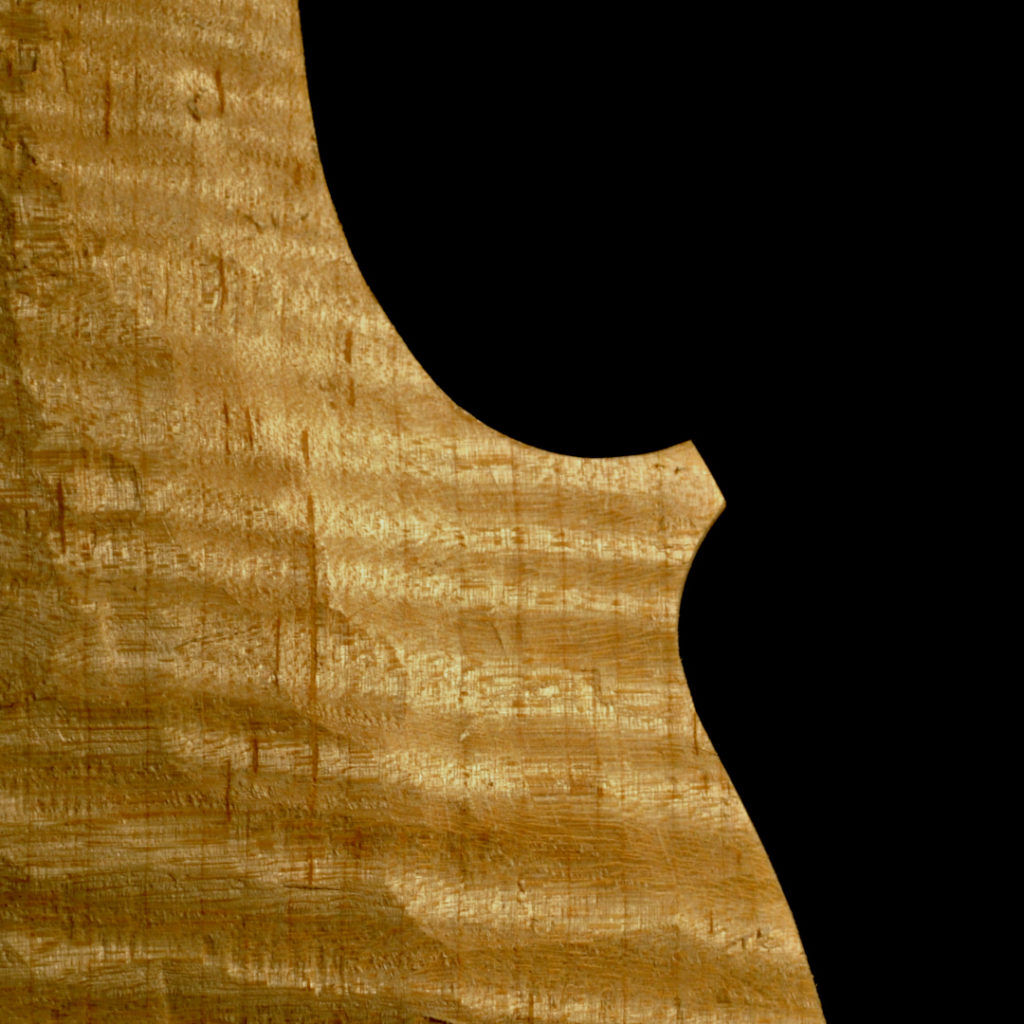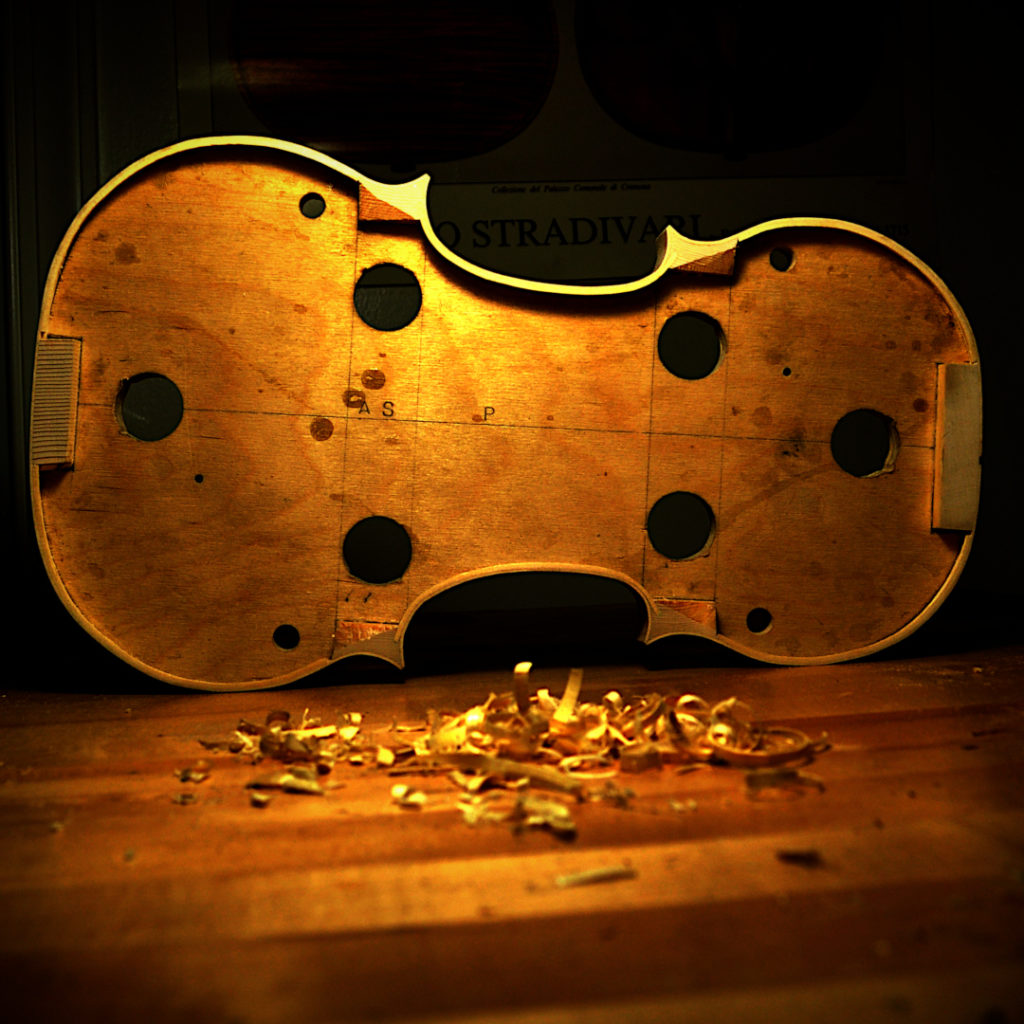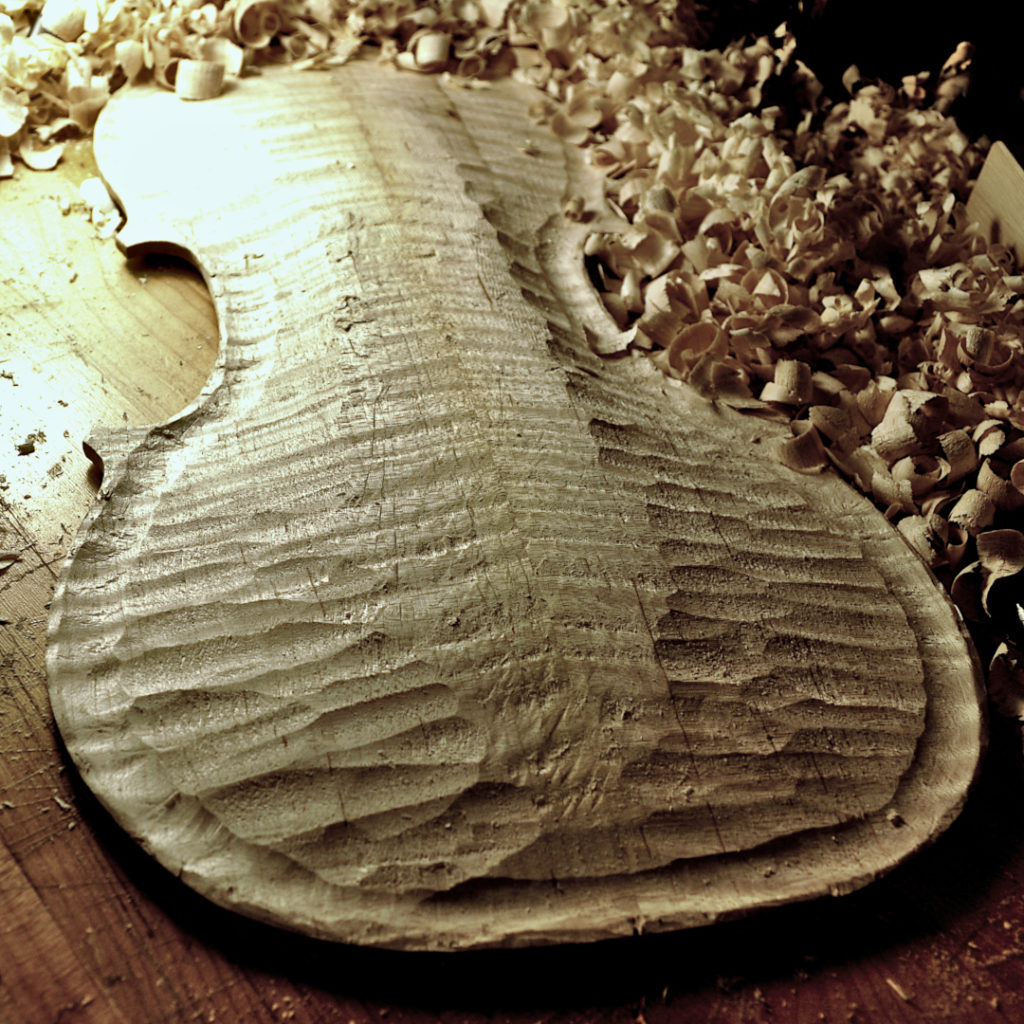The process of building an instrument doesn’t end when it’s strung up to play for the first time. I will spend days, and often longer, making adjustments. It’s impossible to change the fundamental voice of an instrument. But, with patient work and care, it is possible to bring out the best version of an instrument.
So what does that work look like? There are few different ways I can intervene. The three that probably come to mind first are: the choice of strings; the bridge, which can be carved and adjusted; and the sound post, whose exact position and tension can be tweaked.
Slightly less obvious is the afterlength. The afterlength is that bit of the string that is between the bridge and the tailpiece. Its length can be changed by changing the length of the tailgut—the loop of material (usually not gut anymore) that connects the tailpiece to the endbutton. If you make the tailgut longer, the tailpiece will move closer to the bridge, and the afterlength will get shorter. If you make the tailgut shorter, the tailpiece will be further from the bridge, and the afterlength will be longer.
But why bother? To answer I first have to first dispel two pervasive myths about the afterlength.

Myth #1: Longer Afterlength = Higher Tension
The idea that lengthening the afterlength means an increase in string tension follows from our intuition that when you pull back on a string you increase the tension on it, which is true. That’s exactly what you are doing when you turn the pegs to tune your violin up to the proper pitch. And that seems exactly like what is happening when you move the tailpiece back to lengthen the afterlength. I’m grabbing the tailpiece and moving it back, right? Well… no.
Remember, changing the tension is how you tune your violin. If you increase the tension on a string you will also raise the pitch of that string. And we know that’s not the case here! The A string will still be an A string, tuned to 440 Hz (or whatever you’re using), no matter what the afterlength is.
What you have to keep in mind is that the vibrating string length—the distance between the bridge and the nut—does not change. So that distance (![]() ) is fixed. The frequency (
) is fixed. The frequency (![]() ) the string needs to play is also fixed. We’re not changing the string itself so its density (
) the string needs to play is also fixed. We’re not changing the string itself so its density (![]() ) is also still the same. And it turns out that the string tension (
) is also still the same. And it turns out that the string tension (![]() ) is strictly set by those three things, and those three things alone. There is even a formula for it that was worked out by a fellow named Marin Mersenne in 1636, which looks like this:
) is strictly set by those three things, and those three things alone. There is even a formula for it that was worked out by a fellow named Marin Mersenne in 1636, which looks like this:
![Rendered by QuickLaTeX.com \[ f_0=\frac{1}{2L}\sqrt{\frac{F}{\mu}} \]](https://j-dv.com/blog/wp-content/ql-cache/quicklatex.com-29881372d37a6bdea497c446c8eb3a22_l3.png)
Don’t worry about the math. All that matters is that if you have a specific string, with a specific playing length, and it’s tuned to a specific note then you can calculate the tension on that string exactly. So the physics tells us that changing the afterlength isn’t changing the string tension. But then what about our initial intuition about pulling back on a string? How does that square with the physics and the math?
Imagine I could pull back on the tailpiece (i.e. increase the afterlength) while the violin was strung up and in tune. I would indeed have increased the tension of the string…but, now my violin would be out of tune! It would be tuned too high. So I would use the pegs to detune the strings back to their correct pitch, and—what the formula tells me is that—I will always arrive at the exact same tension that I started at.
It’s almost as if I had two tuning pegs: my regular tuning peg by the scroll, and then another peg behind the tailpiece. I can turn the “peg” by the tailpiece to move the tailpiece back and lengthen the afterlength, except instead of turning a peg I change the length of the tailgut. But then I have to turn the peg by the scroll by the same amount to keep the string at the same pitch. You can think of it a bit like an old school reel-to-reel tape machine, unspooling at one end and picking up at the other. The result is that the tailpiece can move closer or further from the bridge, but nothing about the string, its pitch, playing length, or tension will change.
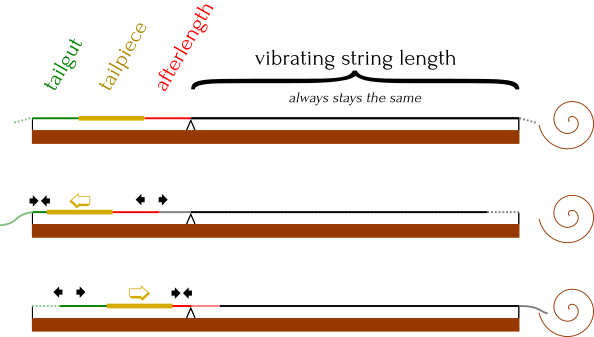
Myth #2: The magic ratio is 1 to 6
You will often find the advice that the afterlength should be exactly ⅙ of the vibrating string length. From a practical perspective what this means is that if you pluck the afterlength it will produce a tone exactly a fifth and two octaves higher the note of that string. So if you were to pluck the afterlength of the A (440.0 Hz) string you will hear an E (2640.0 Hz) two octaves below the E string of the violin (659.2 Hz). For the luthier setting up the instrument that’s very convenient. It’s a quick and easy way to check whether the length is “correct,” just pluck and listen. This is also often pointed to as the explanation for why the after length should be one sixth the string length.
The story is usually fleshed out with appeals to resonance, that by being “in tune” this way the afterlength will resonate sympathetically when you play, which is taken to be a good thing. This can sound plausible. There really is a bit of sympathetic resonance going on between the four strings of the violin when you play, which contributes to that ringingness you get when you play a note in tune. When talking about the afterlength people will often take this further and say or imply that having it set to just the right length will make the whole instrument resonate, or resonate correctly, or resonate more, or something. And, again, more resonance is taken as necessarily better.
It all quickly starts to sound a bit like the classical theory of the harmony of the spheres, in which music, ratios, beauty, and God’s perfect ordering of the world aren’t just metaphors and symbols for each other but manifestations of the same underlying universal truth. I don’t think I have heard anyone explicitly appeal to the harmony of the spheres to explain why the afterlegth should be at a ratio of 1 to 6 with the strings. But, there is a bit of hand-wavy implication that having things be in a whole number ratio with each other, and thus “in resonance” with each other is inherently good acoustically.
Except, it doesn’t actually work that way.
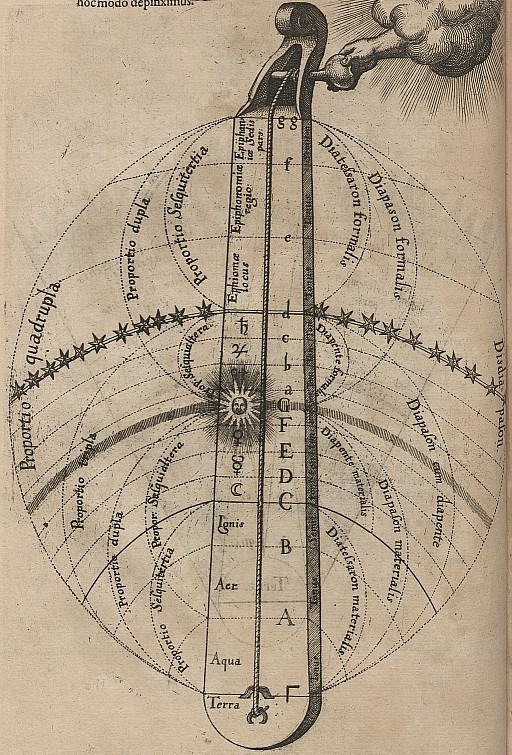
The design of the violin does have a lot of whole number ratios. It’s a product of the era it emerged in, and that includes a bit of harmony of the spheres world view where the perfect ratio of the musical pitches were carried through a design elements with the idea that they represented the perfect merger aesthetics and functionality. That’s just not what’s going on with the afterlength.
This is a good example of how craft knowledge can be true in that it gives good working knowledge and results. And, at the same time, from an empirical science lens be wrong in that the explanations don’t actually make sense. So It is the case that making the afterlength be a sixth of the vibrating string length is how luthiers will often go about setting up an instrument. It’s usually about the right length. But, it’s not because it’s one sixth.
To be very clear: the afterlength does vibrate. The way and frequencies at which it does so matter for the sound of the instrument. But, the afterlength doesn’t vibrate on its own! It’s that whole behind-the-bridge assembly of the tailgut + tailpiece + afterlength. So what does changing the length of the afterlength do? The biggest thing is that you are moving the mass of the tailpiece forwards or backwards, and that changes the mass distribution of that whole behind-the-bridge bit, which in turn changes how it vibrates.
This is the same idea behind those wolf-eliminators, the ones that look like bits of brass stuck to the string behind the bridge, that you’ll sometimes see on cellos. The physics of what’s going on there is a topic for a future blog post but basically that too is about changing the mass distribution, except by adding a moveable mass, instead of moving the tailpiece.
You may have also heard all this stuff come up around the question of whether to add four fine tuners to your tailpiece. Hopefully now you understand that the problem isn’t that it changes the tension on the string. And the problem is not directly that it’s heavy and heavy is bad (else we would all be playing without tailpieces and instead just a loop of metal or something!), though the change in weight is a big part of what changes. The problem really is adding something to a tailpiece that wasn’t designed for it. If you want four fine tuners you are better of using one that was intended to be used that way, like the various models with built in adjusters.
At the end of the day, the physics of why and how all that matters for the sound is a bit more complex than simple sympathetic vibrations. There isn’t a direct linear relationship between making changes in the afterlength and a specific aspect of the instrument’s sound. That’s why having a quick heuristic, like ⅙, is useful to get us in the ball park before starting the lengthy work of listening, adjusting, listening, adjusting… till it’s just right.
